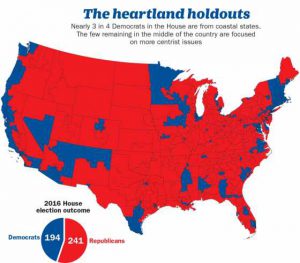To Donald Trump, popularity defines his personal success. It is everything.
That’s why, after the 2016 election, Trump vehemently denied that he lost the popular vote or that his inauguration crowd was smaller than Obama’s. When the facts don’t jibe with his fantasy views on his popularity, Trump is compelled to alter the facts.
Trump similarly measured the success of his television show, The Apprentice, entirely by ratings (popularity). That’s why Trump deemed Arnold Schwarzenegger, Trump’s Apprentice replacement, a failure: Arnold’s ratings were lower than Trump’s.
As Trump sees it, the worst insult you can hurl at someone (or some thing) is that they are unpopular. He refers to the New York Times as “failing” because (according to Trump) its circulation is down. That’s all that matters. [By the way, Trump is lying here. Overall NYT circulation, including digital, is actually up.]
Trump views his presidency in the same way as The Apprentice…as a reality TV show…a form of entertainment. Even though every word he says and every action he takes can now have the most extreme consequences for the entire country — exactly the opposite of his role on The Apprentice — Trump remains laser focused on ratings and popularity — to the detriment of everything else.
Two recent quotes from Trump reveal this in its starkest terms:
On March 8, ABC News’ John Karl asked Trump whether an upcoming announcement would focus on ongoing nuclear proliferation talks with North Korea. Trump replied:
“It’s almost beyond that. Hopefully, you will give me credit.”
There it is. Whatever Trump does, whatever he accomplishes or fails to accomplish, what matters most to Trump is how much credit he receives. I imagine Trump would claim that achieving world peace would be “beautiful” — but only if Trump gets credit for doing so. His personal popularity and public admiration remain the primary goal. Everything else is tied for last place. This is narcissism at its purest and most venal.
Similarly, on March 10 at a rally in Pennsylvania, Trump responded to an article that had asked if he is “a good speaker?” Trump told the crowd:
“You know, how easy it is to be presidential? But you’d be so bored…”
There it is…again. What matters is not who Trump insults, what norms he tramples — or even what positive accomplishments he might achieve. What matters most is that he be entertaining — not boring. Because that’s what gets the best ratings. The idea that he might be a better President if he were a bit less entertaining — that the country might benefit from a more hard-working, more informed and more deferential President — this never occurs to him. [To be fair, it probably doesn’t occur to his core supporters either.]
This explains why, back in January, Trump assessed a meeting with Congressional leaders on the critical matter of immigration policy, thusly:
“Actually it was reported as incredibly good and my performance…got great reviews.”
You can’t tell whether this quote refers to Trump’s efforts to solve one of the most vexing dilemmas facing this country — or a guest appearance at a “professional” wrestling event. And that’s the point. To Trump, they are no different. His presidency is The Donald Trump Show. That’s also the key problem facing the rest of us. This country needs more than an ignorant, untruthful and self-absorbed reality TV show host as POTUS. Unfortunately, that’s what we have.

